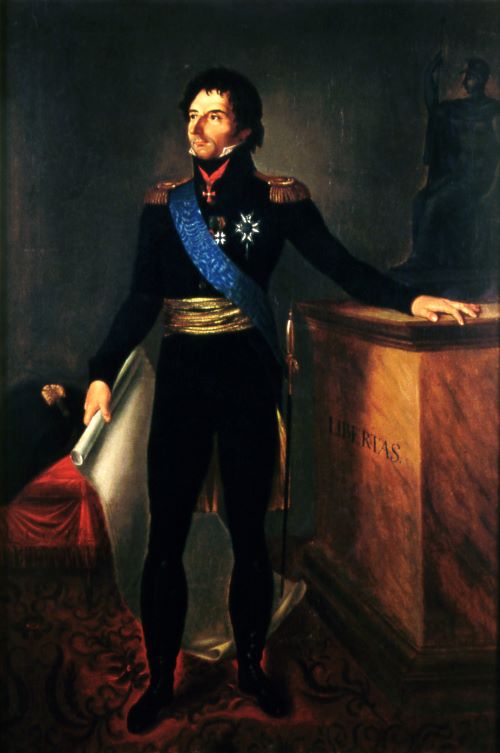

The proposal Frederik Meltzer put forward was the flag we now know as the Norwegian flag. Photo: Archives of the Storting.
The Norwegian flag
In May 1821 the Storting chose what is now one of the most powerful symbols of sovereignty, community and democracy in Norway.
For a short time in 1814, Norway was an independent state; one with its own constitution and a newly elected king, Christian Frederik. Yet independence was to last no more than a summer. Norway was swiftly forced into a union with Sweden, and Christian Frederik was sent back to his native Denmark.
In the years prior to 1814, there was no separate flag to represent Norway. As part of the Danish-Norwegian state, Norway had used the Danish Dannebrog, one of the world’s oldest flags still in use.

There was no place for a Danish flag in the union with Sweden. For commerce, there was only the union flag: the Swedish flag, with a red and white St. Andrew’s Cross in one corner. Consequently, the wish for a flag of one’s own for trade purposes was a returning topic in the years after 1814.
In the autumn of 1820, Gabriel Schanche Kielland, a merchant and shipowner from Stavanger, petitioned the Storting to make them choose a new Norwegian commercial flag. He contacted friends and acquaintances along the coastline to help him in his cause. The response was overwhelmingly positive. When the new parliamentary session started in February 1821, there were propositions in favour of Kielland’s initiative. A committee was appointed to assess the different designs, and in April they delivered their recommendation.
The proceedings started in the Odelsting at the end of the month, but it soon became clear that there was profound division within parliament. Frederik Meltzer, an MP from Bergen, argued passionately for a flag which was a clear departure from all other national flags. It should consist of a cross, and should be red, white and blue; the colours of liberty, the colours used on the revolutionary flags of France and the United States of America. The proposal he put forward was the flag we now know as the Norwegian flag.
It was decided to postpone the debate for a few days. In the meantime, all the designs for a new flag were put on display for all to see. When the Storting reconvened on 4th May, Meltzer’s design received the most votes, and on 17th May the proposal was submitted to the government for royal assent.

King Carl Johan was opposed to the idea that the Storting should have the power to determine the design of the flag, contending that it was his prerogative. He therefore refused to sanction the law and the flag. Instead, he issued a royal decree which stated that the flag the Storting had proposed was to be the new Norwegian commercial flag. The Storting was happy to let the matter rest, arguing that in practice the royal decree sanctioned its decision.
In the years that immediately followed, the Norwegian commercial flag coexisted with the Swedish-dominated union flag. In the late 1830s, however, there were moves to design a new union flag, where both nations kept their own flags and inserted a joint emblem of the union in one corner. King Carl Johan’s death in 1844, combined with considerable debate on the issue in Norway, prompted the new king, Oscar I, to change the union flag, and the Norwegian and Swedish flags were given equal status.
At the end of the 19th century, the flag became part of the conflict between Norway and Sweden. This culminated in the Flag Act of 1898, in which the Storting decided that the Norwegian flag would no longer display the emblem of the union.
The flag as we know it today is the result of the work of the Storting. It was chosen by the representatives of the people and belongs to the people.
Sist oppdatert: 24.10.2022 10:47